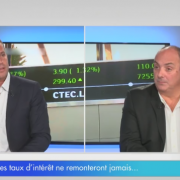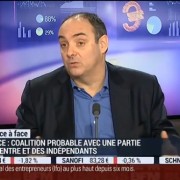Is FED to do paradigm shift?
“You can’t change the fruit without changing the root” – Stephen Covey
We could be in for one of the biggest paradigm shift in newer monetary history if Fed does indeed remove “patient” tonight and then follow through on hiking in June/September, despite recent weaker US data – to illustrate this I have come up with this chart:
I “model” perfect world for Fed in economic numbers: Perfection = (inflation + growth) – unemployment, which would look like this: Perfection = (2% inflation + 3.0% growth) – 4.5% unemployment = 0.5%
This “model” has done pretty well in explaining the recent hikes and reduction in US interest rates. What is remarkable about the present talk about hiking in June or September is that it would constitute the first time that FED moves when the “model” is clearly not ready – if anything both growth and inflation should fall heading into the meeting in June making the above chart even more off road to the normal “ignition phase” of hikes.
This means FED is pursuing a different agenda – My firm believe is that FED is doing a margin call on ASSET INFLATION and secondly which have become too large in profit and size to GDP with the empirical proven negative consequences – The Economist: Warning too much finance is bad for the economy
FED’s vice-chairman Stanley Fischer is clearly driving the process towards Asset Inflation / Margin call and I think it’s compulsory for any FED watcher to read this transcript (Stanley Fischer on inflation and financial stability) from Council of Foreign Relations back in December 2014 (S&P future @ 2050) where he touches on another recent paper from NBR in his words:
“FISCHER: Well, the — I started learning about the Fed when I was an undergraduate. And in those days, we spent a lot of time on the Fed’s annual report of 1923, which set out how it thought monetary policy worked. I was amazed to discover in the NBR’s most — one of the NBR’s recent lists of papers, a paper saying, « When did the Fed give up on its 1923 principles?« , which included preventing banks’ lending for speculative purposes. That was one of the things that they were supposed to stop.
..and later:
“The other fact which has come up is, should the Fed be involved in regulation in stabilizing the financial system? And that was something that was believed in 1923, was regarded as not very important in the early 2000s, and is now very important. And I think we’re learning that. I don’t think we’ve learned how to deploy it, but we’ve learned that we have to figure out how to undertake financial sector stabilization, and that’s something which we’ll develop in the next few years, and I think we’re beginning to get a hold of that — that material now”
In other words Fischer believes in macro prudential frameworks and that it needs to be tied to misallocation of capital.
This leads to the conclusion in an economic sense which has been better formulated this morning by Minack Advisors: The problem with monetary policy: (Gerald Minack is a must read always – LINK)
The Fed tightening debate is tricky: monetary policy has been fairly ineffectual as a real economy stimulant in this cycle, but it’s been very effective reigniting the ‘financial economy’. I don’t think that real economy factors – such as inflation or growth – justify a tightening. But rates are too low for the financial economy: they are encouraging financial smarty-pants to do the same sort of things that got economies into a jam in the first place.
The conclusion:
The Stanley Fischer camp in the FOMC wants to do margin call on asset inflation. The “game plan” from here is to stop the misallocation of capital into the financial sector and steer it back towards Main Street to reduce inequality, bubbles and general mal-investments. I personally think the massive over-investment in oil sector has been real catalyst for this change of mind at the Fed.
Maybe we are starting to head back to the only economic principle I understood and value when at University: Money needs to be allocated to the highest marginal rate of return (& not to the biggest nepotism) – If so this potential margin call could be the best news since the stock market bottomed in March 2009 @ 666.00. Don’t say I never optismistic!
Steen Jakobsen, Saxo bank’s chief economist and member of Les Econoclates










Laisser un commentaire
Participez-vous à la discussion?N'hésitez pas à contribuer!